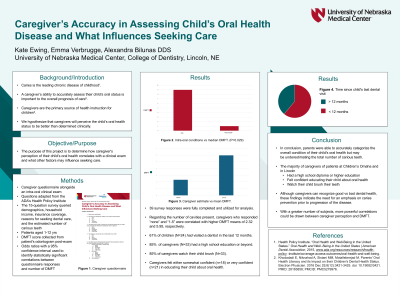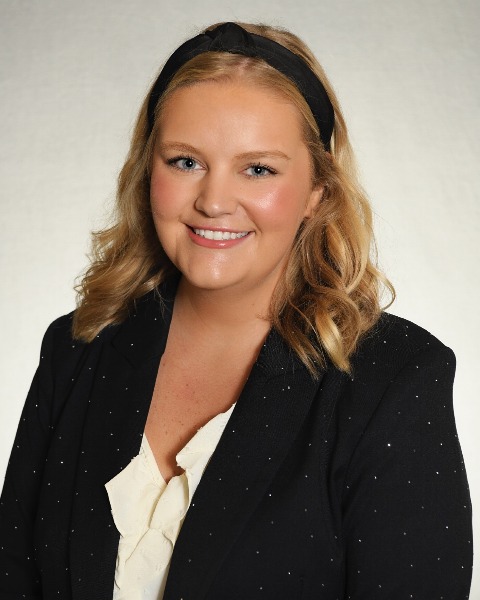Other
247 - Caregivers Accuracy in Assessing Child's Oral Health Disease and What Influences Seeking Care


Emma E. Verbrugge (she/her/hers)
Student
University of Nebraska Medical Center
Lincoln, Nebraska, United States- KE
Kate M. Ewing, NA
University of Nebraska Medical Center
- AB
Alexandra L. Bilunas, DDS
Assistant Professor of Pediatric Dentistry
University of Nebraska Medical Center
Omaha, Nebraska, United States - ZH
Zachary L. Houser, DMD
Program Director
University of Nebraska Medical Center
Omaha, Nebraska, United States
Presenting Author(s)
Co-Author(s)
Research Mentor(s)
Program Director(s)
Purpose
This study investigates the accuracy between caregiver's perception of their child's oral health status and the determined oral health status from a clinical exam. It was hypothesized that caregivers will perceive the child's oral health status better than determined clinically.
Methods
A survey approach was used alongside an intra-oral clinical exam. The parent filled out the survey prior to the exam. The 15-question survey queried demographics, household income, insurance coverage, reasons for seeking dental care, and the estimated number of carious teeth. After survey completion, a routine intra-oral exam of the child was completed by a student dentist overseen by pediatric faculty. The clinical oral health status was represented by the DMFT score from the charted odontogram. Survey results were analyzed alongside clinical findings by a statistician to draw conclusions between perceived oral health and clinical health status. Odds ratios with a 95% confidence interval were used to identify statistically significant differences.
Results
Intra-oral conditions described as “fair” vs. “very good” revealed statistically significant respective DMFT scores of 9 and 0. Dental health categorized as “poor/fair” was associated with a median DMFT of 8, while “good/very good” corresponded with a median DMFT of 2. Regarding the number of cavities present, caregivers who responded “none” and “1-5” were correlated with higher DMFT means of 2.32 and 5.95, respectively.
Conclusion
In conclusion, parents were able to accurately categorize the overall condition of their child's oral health but may be underestimating the total number of carious teeth.
Identify Supporting Agency and Grant Number: Research supported by University of Nebraska Medical Center College of Dentistry Student Research Fellowship.

.jpg)